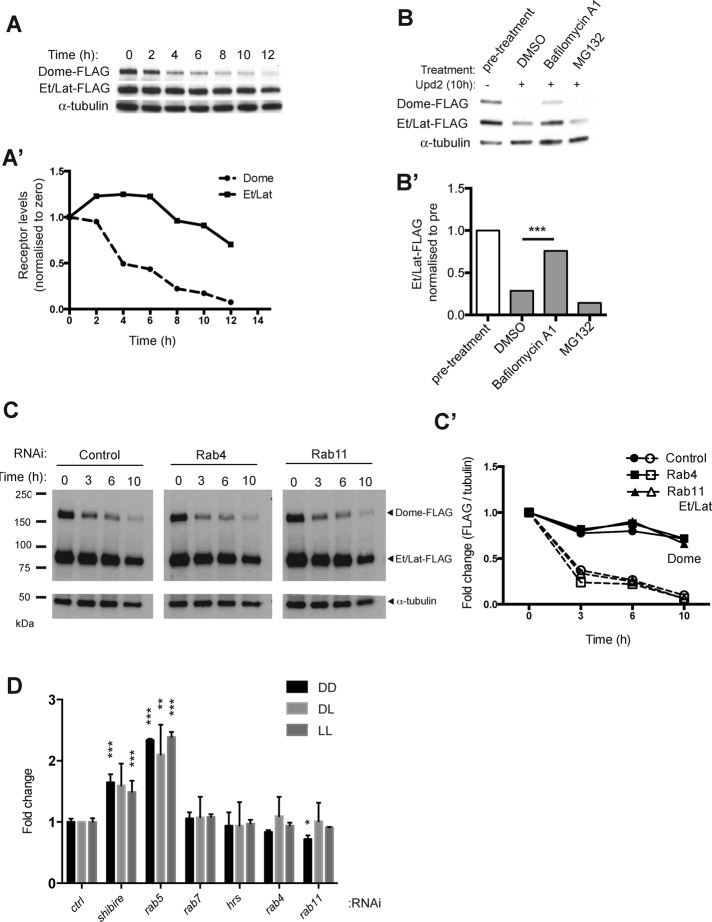FIGURE 4:
Et/Lat is trafficked and degraded in the lysosome via a slower mechanism than that for Dome. (A) Time course of receptor degradation over the indicated time in hours. Cyclohexamide to block new translation and Upd2-conditioned medium were present throughout the assay. (A′) Quantification of data shown in A after normalization of FLAG to α-tubulin (Dome-FLAG, dashed line; Et/Lat-FLAG, solid line). (B) Levels of Dome-FLAG and Et/Lat-FLAG 10 h after the addition of cyclohexamide and Upd2 ligand stimulation. By comparison to the dimethyl sulfoxide carrier control, incubation with 0.2 μM bafilomycin A1 greatly reduced ligand-induced degradation of Dome and Et/Lat, whereas treatment with 10 μM MG132 did not. (B′) Quantification of data shown in B. (C) Time course of Dome-FLAG and Et/Lat-FLAG degradation over the indicated time course after prior treatment with dsRNA targeting the indicated mRNAs. (C′) Quantification of receptor levels normalized to α-tubulin and shown by solid lines (Et/Lat-FLAG) and dashed lines (Dome-FLAG). (D) Steady-state levels of Dome:Dome (DD), Dome:Et/Lat (DL), and Et/Lat:Et/Lat (LL) dimers as reported by the βlue-βlau bimolecular complementation and β-Glo assay after 5 d of RNAi treatment. Results are shown as fold changes to control. Control levels were averaged from two wells treated with rh5 dsRNA. Significant results are shown; all unlabeled bars were not significantly different from controls. *p < 0.05, **p < 0.01, ***p < 0.001.

